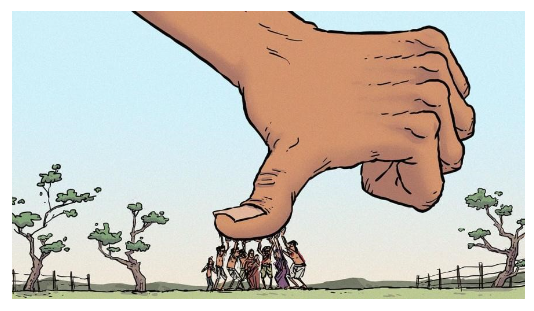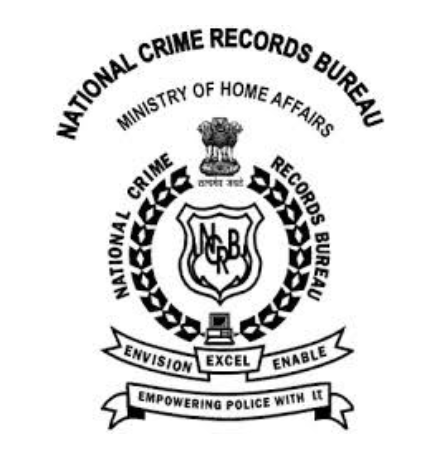Monday, 11th December 2023
Large Language Models - Edukemy Current Affairs
In News: An OpenAI official faced criticism for likening her interaction with ChatGPT to therapy, even though she acknowledged not having undergone therapy before.
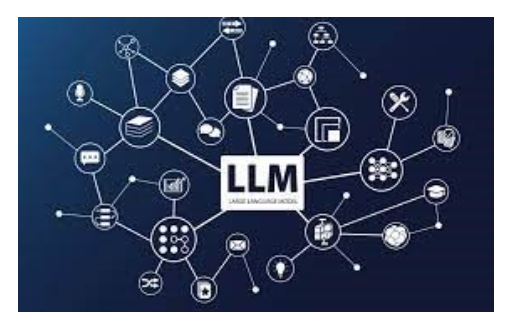
About Large Language Models (LLMs)
- Large Language Models (LLMs) are a distinct category of generative AI models designed to comprehend and produce human-like text.
- Constructed using deep learning, particularly neural networks, these models can generate coherent and contextually relevant text in response to prompts or inputs.
- OpenAI's GPT (Generative Pre-trained Transformer) is a prominent example of an LLM. Generative AI, a subset of artificial intelligence, focuses on creating systems that can generate content resembling human-produced material.
- These systems learn from existing data patterns to generate new and original content across various mediums like text, images, music, and more.
- The collaborative relationship between the U.S. and India, particularly in the realm of deep tech, is thriving.
- India's draft policy on deep tech highlights the alignment of over 10,000 startups in different deep tech sectors with the U.S.-India partnership.
Deep Tech Unveiled: Transformative Innovation and Challenges
Definition of Deep Tech
Deep tech, also known as deep technology, denotes a category of startup ventures that create novel offerings rooted in tangible engineering innovations or scientific breakthroughs. Typically, these startups operate within fields such as agriculture, life sciences, chemistry, aerospace, and green energy.
Scope of Deep Tech
Deep tech encompasses diverse fields like Artificial Intelligence, advanced materials, blockchain, biotechnology, robotics, drones, photonics, and quantum computing. These areas are rapidly transitioning from early research stages to practical applications in the market.
Key Characteristics of Deep Tech
- Impact
- Deep tech innovations are radical, often disrupting existing markets or creating new ones, thereby influencing lives, economies, and societies.
- Time & Scale
- Development in deep technology demands more time to mature and reach market readiness compared to shallow technology like mobile apps and websites.
- For instance, artificial intelligence took decades to evolve and is still advancing.
- Capital
- Deep tech ventures often require substantial early-stage funding for research, development, prototyping, hypothesis validation, and technology advancement.
Challenges Confronting Deep Tech
- Deep-tech startups face significant challenges, with funding being a primary concern, as less than 20% receive financing.
- Government funds remain underutilized, and there is a lack of domestic capital.
- Major hurdles include talent acquisition, market access, research guidance, investor comprehension of deep tech, customer acquisition, and talent-related costs.
Unveiling the Draft National Deep Tech Startup Policy (NDTSP), 2023: Nurturing Innovation and Global Engagement
Overview
The Draft National Deep Tech Startup Policy (NDTSP), 2023, aims to fortify research and development in deep tech startups, focusing on fundamental and technical challenges rather than merely monetizing technology through established business models.
Policy Objectives
- Financial Support
- The policy strives to identify strategies for providing crucial financial support to deep tech startups during pivotal stages, especially before the launch of their products or concepts in the market.
- Facilitating Startups
- NDTSP proposes simplifying the intellectual property regime, easing regulatory requirements, and implementing various measures to foster the growth of deep tech firms.
- Global Expansion
- The policy recommends the establishment of an Export Promotion Board to lower entry barriers for Indian deep tech startups in foreign markets.
- Additionally, it advocates incorporating clauses in foreign trade agreements to facilitate market access for these startups.
Key Recommendations
- Inter Ministerial Deep Tech Committee
- The policy suggests the formation of an "Inter Ministerial Deep Tech Committee" to regularly assess the needs of enhancing the deep tech ecosystem's functionality.
- Addressing Disparities
- Expressing discontent with international agreements that purportedly disadvantage India in terms of manufacturing and developmental prowess, the policy emphasizes the importance of coordinated efforts to engage with global partners and multilateral institutions for the optimal growth of the Indian Deep Tech Ecosystem.
|
UPSC Previous Year Questions Prelims (2020) Q. With the present state of development, Artificial Intelligence can effectively do which of the following?
Select the correct answer using the code given below: (a) 1, 2, 3 and 5 only Ans: (b) Mains (2020) Q. “The emergence of the Fourth Industrial Revolution (Digital Revolution) has initiated e-Governance as an integral part of government”. |
Source: TH
UNEP's Action Plan for Cooling Sector
In News: The United Nations Environment Programme (UNEP) has put forth a comprehensive action plan to substantially decrease emissions from the worldwide cooling sector.
UNEP's Proposed Strategy for Sustainable Cooling
- Nature-Based Solutions
- The recommendations highlight passive cooling methods like shading, ventilation, insulation, green roofs, and reflective surfaces.
- These nature-based solutions aim to reduce the reliance on mechanical cooling, saving energy and cutting emissions.
- Efficiency Standards
- The focus is on promoting higher energy efficiency technologies and practices for cooling equipment, including air conditioners, refrigerators, and fans.
- Enhanced energy efficiency can lead to reduced energy consumption, lower emissions from cooling devices, and decreased costs for users and utilities.
- Phasedown of Refrigerants
- This involves transitioning to alternative substances like hydrocarbons, ammonia, or carbon dioxide, replacing potent greenhouse gases such as hydrofluorocarbons (HFCs).
- The proposal emphasizes expediting the phasedown of climate-warming refrigerants and air conditioning, aligning with the Kigali Amendment to the Montreal Protocol.
- Addressing the Cooling Sector
- The cooling sector is pivotal for mitigating rising temperatures, ensuring food safety, supporting industrial processes, and fostering robust economies.
- Unchecked growth in cooling demand could lead to a substantial surge in electricity consumption and emissions.
- Currently, the cooling sector accounts for 20% of global electricity consumption.
Benefits of Sustainable Cooling
Adopting passive cooling techniques and efficient cooling equipment could result in consumer savings of USD 17 trillion from 2022 to 2050. These measures are projected to decrease peak power requirements by 1.5-2 terawatts, averting the need for significant power generation investments. Furthermore, the increased use of low-global warming potential technologies can cut HFC emissions by 50% in 2050.
Initiatives for Sustainable Cooling
- Global
- National Cooling Action Plans (NCAPs)
- Over 40 countries, including India, have developed NCAPs, with 25 others in various stages of preparation.
- Global Cooling Pledge
- Launched at the United Nations Framework Convention on Climate Change, over 60 countries committed to the Global Cooling Pledge, aiming to reduce the climate impact of the cooling sector.
- Kigali Amendment Acceleration
- The Kigali Amendment, under the Montreal Protocol, seeks an 80–85% reduction in HFC production and consumption by 2047, preventing significant greenhouse gas emissions.
- National Cooling Action Plans (NCAPs)
- India
- India Cooling Action Plan (ICAP)
- India has devised the ICAP as part of its comprehensive strategy for sustainable cooling.
- Bureau of Energy Efficiency (BEE) Star Rating Programme
- A crucial initiative within India, this program focuses on promoting energy-efficient cooling equipment through star ratings.
- India Cooling Action Plan (ICAP)
Source: DTE
Freebie Politics - Edukemy Current Affairs
In News: Vice-President remarked that the politics surrounding "freebies," distorts expenditure priorities.
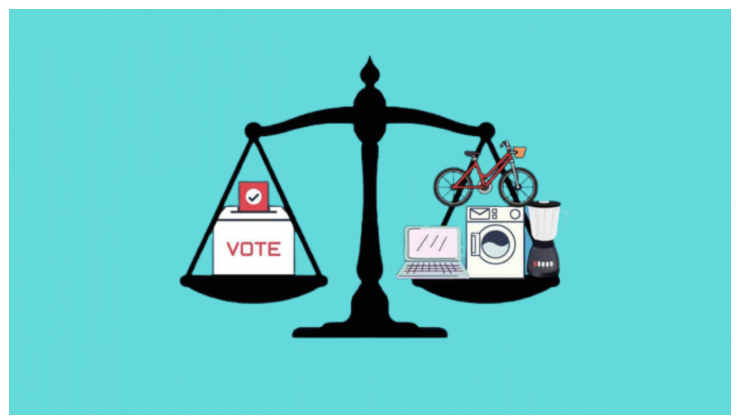
Understanding Freebies: A Distinction from Welfare Measures
In a 2022 report by the Reserve Bank of India, freebies are defined as "a public welfare measure provided free of charge." The report emphasizes that freebies differ from public/merit goods like health and education, which offer broader and long-term benefits.
Distinguishing Freebies from Welfare
The disparity between freebies and welfare schemes may not always be clear-cut, but a fundamental distinction lies in their long-term impact on beneficiaries and society. Welfare schemes contribute positively, while freebies can potentially lead to dependency or distortions.
Key Characteristics of Freebies
- Nature
- Freebies encompass goods and services provided without charge to users.
- Objective
- They aim to benefit the targeted population in the short term.
- Perception
- Often viewed as a strategy to attract voters or sway them with populist promises.
- Examples
- Free laptops, TVs, bicycles, electricity, water, etc.
Key Characteristics of Welfare Schemes
- Nature
- Welfare schemes are well-conceived plans designed to benefit the target population and enhance their standard of living and resource access.
- Objective
- They typically fulfill constitutional obligations (Directive Principles of State Policy) toward citizens.
- Perception
- Viewed as a means to promote social justice, equity, and human development.
- Examples
- Public distribution system (PDS), Mahatma Gandhi National Rural Employment Guarantee Act (MGNREGA), mid-day meal scheme, etc.
Pros and Cons of Freebies: A Two-Edged Evaluation
Advantages of Freebies
- Enhancing Public Engagement
- Government freebies foster public trust and satisfaction, showcasing responsiveness and accountability.
- Initiatives like laptops, bicycles, and cash transfers positively impact voter turnout and political awareness.
- Stimulating Economic Growth
- Freebies can boost economic growth by enhancing the skills, mobility, and income opportunities of the less developed regions.
- Initiatives like providing bicycles to schoolgirls increased enrollment rates and improved learning outcomes.
- Contributing to Social Welfare
- Freebies cater to basic necessities, improving literacy, health, and quality of life for the needy.
- Programs like food subsidies and health insurance reduce poverty and catastrophic health shocks.
- Addressing Income Inequality
- Wealth redistribution through freebies, such as loan waivers or cash transfers, empowers low-income households.
- Loan waivers relieve the debt burden and enhance the creditworthiness of distressed farmers.
Disadvantages of Freebies
- Creating Dependency Syndrome
- Freebies may foster a sense of entitlement, reducing motivation to work hard or contribute.
- Public perception in some regions suggests that voters consider freebies as crucial in their voting decisions.
- Imposing Fiscal Burden
- Freebies strain fiscal health, leading to increased expenditure, deficits, and debts.
- Programs like pension schemes pose a fiscal risk as they imply a growing pension liability with an aging population.
- Distorting Resource Allocation
- Allocation of funds to freebies can divert resources from critical sectors, affecting infrastructure and development.
- Critics argue that freebies like laptops may divert funds from urgent needs like improving school infrastructure.
- Compromising Quality
- Freebies may compromise quality and competitiveness, hindering innovation incentives.
- Some reports suggest that freebies like laptops are based on obsolete technology, limiting functionality.
- Environmental Impact
- Freebies may lead to overuse and wastage of natural resources, impacting the environment.
- Instances of free electricity contributing to overuse and wastage in certain regions have been reported.
Navigating Forward: Strategies for Effective Governance
- Delineating Welfare and Freebies
- Clearly define freebies from an economic standpoint and establish their connection to taxpayers' money.
- Recognize the distinction between subsidies, justified targeted benefits, and freebies.
- Transparent Financial Disclosures
- Mandate political parties to transparently disclose the financing and trade-offs of freebies to voters and the Election Commission of India (ECI).
- Specify revenue sources, fiscal impact, opportunity costs, and the sustainability of freebies.
- Empowering the Election Commission of India
- Enhance the powers of the ECI to regulate and monitor the announcement and implementation of freebies during elections.
- Provide the ECI with authority to de-register parties, impose penalties, or take contempt action for violating the model code of conduct or court orders on freebies.
- Promoting Voter Awareness
- Empower voters with the knowledge of economic and social consequences associated with freebies.
- Encourage voters to demand performance and accountability from political parties through awareness campaigns, literacy programs, civil society initiatives, and media platforms.
Source: TOI
Human Trafficking - Edukemy Current Affairs
In News: Interpol reports that Telangana Police registered one of India's initial cases of human trafficking, involving vicims coerced into committing cyber fraud.
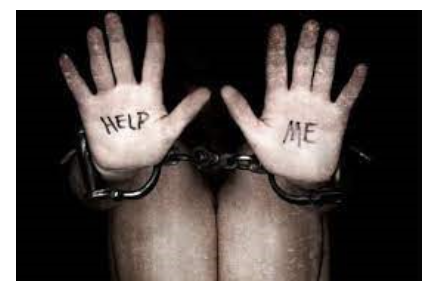
Human Trafficking in India: A Comprehensive Overview
- Introduction
- Human trafficking, a pervasive global issue, extends its reach to numerous countries, including India.
- India's large population, economic disparities, and intricate social dynamics make it a hotspot for various forms of human trafficking.
- Current Statistics
- As per the National Crime Records Bureau (NCRB) data for 2022, India witnessed 2,189 cases of human trafficking, involving 6,533 victims.
- Among these victims, 4,062 were female, 2,471 were male, and a notable 2,877 were minors.
- The trend in trafficking varies between underage boys and girls, with a reversal when considering adult victims.
- State-wise Vulnerability
- Certain states, notably Telangana, Maharashtra, and Assam, reported higher numbers of human trafficking cases in 2021.
- These regions, due to their geographical locations, are particularly susceptible to cross-border trafficking, demanding special attention and resources.
Forms of Human Trafficking
- Forced Labor
- Victims coerced or deceived into exploitative work conditions in sectors such as agriculture, construction, domestic work, and manufacturing.
- Sexual Exploitation
- Individuals, particularly women and children, trafficked for commercial sexual exploitation, including prostitution and pornography.
- Child Trafficking
- Children trafficked for various purposes, including child labor, forced begging, child marriage, adoption scams, and sexual exploitation.
- Bonded Labor
- People trapped in a cycle of debt bondage, forced to work to repay increasing debts due to exploitative practices.
- Organ Trafficking
- Illegal trade of organs like kidneys, liver, and corneas for transplantation purposes.
Causes
- Socioeconomic Factors
- Poverty, unemployment, and limited economic opportunities create vulnerability, compelling individuals to desperate situations conducive to trafficking.
- Gender Inequality and Discrimination
- Deep-seated gender inequalities, discrimination, and violence against women and girls amplify susceptibility to trafficking.
- Issues like dowry-related violence, child marriage, and limited access to education contribute to this vulnerability.
- Political Instability and Conflict
- Regions affected by political instability, armed conflict, and displacement provide fertile ground for trafficking.
- Displacement leaves people vulnerable, lacking protection and increasing the likelihood of exploitation.
- Corruption and Organized Crime
- Widespread corruption within law enforcement, immigration, and judicial systems enables traffickers to operate with impunity.
- This makes it challenging to identify, investigate, and prosecute cases effectively.
Impacts
- Physical and Psychological Trauma
- Trafficking victims endure physical and psychological abuse, violence, and trauma.
- Suffering injuries, sexually transmitted infections, malnutrition, and physical exhaustion, they also face psychological impacts such as anxiety, depression, and post-traumatic stress disorder (PTSD).
- Violation of Human Rights
- Human trafficking fundamentally violates victims' human rights, stripping them of freedom, dignity, and security.
- Economic Exploitation
- Trafficked individuals face harsh working conditions, long hours, and minimal or no pay.
- Many victims become ensnared in debt bondage, forced to work to repay an escalating debt, making escape from exploitation exceedingly difficult.
- Disruption of Social Fabric
- Human trafficking disrupts the social fabric of communities and families.
- Forcibly separating individuals from their loved ones leads to torn families, loss of social support networks, and strained relationships within communities.
Relevant Laws in India and International Conventions
- Constitution of India
- Articles 23 and 24 prohibit human trafficking, forced labor, and employment of children below 14 in hazardous occupations.
- Indian Penal Code (IPC) Sections
- Sections 370 and 370A provide comprehensive measures to counter human trafficking, including trafficking of children and dealing with selling and buying of girls for prostitution.
- Other Legislations
- Immoral Traffic (Prevention) Act, 1956 (ITPA), Prohibition of Child Marriage Act, 2006, Bonded Labour System (Abolition) Act, 1976, Child Labour (Prohibition and Regulation) Act, 1986, Transplantation of Human Organs Act, 1994, and Protection of Children from Sexual Offences (POCSO) Act, 2012.
- International Conventions
- United Nations Convention on Transnational Organised Crime (UNCTOC) Protocol and SAARC Convention on Preventing and Combating Trafficking in Women and Children for Prostitution, both ratified by India.
Way Forward
- Delineating Trafficking and Begar
- Clearly define and differentiate between human trafficking and forced labor (begar).
- Transparent Financial Disclosures
- Mandate political parties to disclose the financing and trade-offs of freebies transparently.
- Empowering Election Commission of India
- Enhance the powers of the ECI to regulate and monitor the announcement and implementation of freebies.
- Promoting Voter Awareness
- Educate voters about the economic and social consequences of freebies, encouraging rational and ethical choices.
- Judicial Oversight
- Involve judicial intervention for proposing measures to control freebies during election campaigns.
- Focus on Inclusive Development
- Address root causes of poverty and inequality through inclusive development, fostering sustainable economic growth and social progress.
|
UPSC Previous Year Questions Mains (2018) Q. India’s proximity to the two of the world’s biggest illicit opium-growing states has enhanced her internal security concerns. Explain the linkages between drug trafficking and other illicit activities such as gunrunning, money laundering and human trafficking. What counter-measures should be taken to prevent the same? |
Source: TH
Chief Minister - Edukemy Current Affairs
In News: Chhattisgarh has appointed Vishnu Deo Sai, a seasoned tribal leader, as its new Chief Minister.
Key Points on Chief Minister's Role and Responsibilities
- Appointment
- Constitutional Provision: Article 164 mandates the Governor to appoint the Chief Minister.
- Majority Party Leader: The leader of the party with the majority in assembly elections becomes the Chief Minister.
- Executive Authority: Chief Minister holds real executive authority, though the Governor retains discretionary powers.
- Non-Legislature Appointment: A non-legislator can serve as Chief Minister for six months, requiring subsequent election to the legislature.
- Term of the CM
- Governor's Pleasure: Chief Minister serves at the Governor's pleasure but can't be dismissed without majority loss.
- Vote of No-Confidence: Removal possible via a vote of no-confidence in the State Legislative Assembly.
Powers and Functions
- With Respect to Council of Ministers
- Ministerial Appointments: The Governor appoints ministers based on Chief Minister's recommendations.
- Portfolio Allocation: Chief Minister allocates and reshuffles portfolios, holding the key role in the council.
- Council Collapse: Chief Minister's resignation can lead to the council's collapse.
- With Respect to Governor
- Link Between Governor and Council: Acts as a crucial link between the Governor and the state council of ministers.
- Appointment Advice: Advises the Governor on crucial appointments like advocate general and commission members.
- With Respect to State Legislature
- Policy Announcement: Chief Minister declares policies on the legislative floor.
- Dissolution Recommendation: Recommends legislative assembly dissolution to the Governor.
- Other Functions
- State Planning Board Chairman: Heads the State Planning Board.
- Zonal Council Vice-Chairman: Serves as the vice-chairman of the relevant zonal council.
- National Council Membership: Member of the Inter-State Council and NITI Aayog Governing Council.
- Government Spokesperson: Chief spokesman for the state government.
- Emergency Crisis Manager: Takes a leadership role during emergencies.
- People's Representative: Meets and addresses people's concerns, receiving memoranda and addressing problems.
- Services Head: Political head of the state's services.
Source: TH
Child Labour (Prohibition and Regulation) Act
In News: The Labor Department has been instructed to furnish a report following an investigation into allegations of child labor.
Child Labour (Prohibition and Regulation) Act, 1986
Definition and Objective
- The Child Labour (Prohibition and Regulation) Act, 1986 defines a child as an individual below the age of 14.
- Objective: Regulate working hours and conditions for child workers and prohibit their employment in hazardous industries.
Child Labour (Prohibition and Regulation) Amendment Act, 2016
Amendment Overview
- The 2016 amendment prohibits children from engaging in any occupation and adolescents from hazardous occupations.
- Stricter Punishments: Introduces harsher penalties for employers violating the Act.
- Cognizable Offense: Makes employing a child or adolescent against the Act cognizable.
- Government Intervention: Grants the government authority to restrict the employment of adolescents in hazardous conditions.
Child Labour (Prohibition and Regulation) Amendment Rules, 2017
Amendment Details
- Framework Enhancement: Introduces a comprehensive framework for the prevention, prohibition, rescue, and rehabilitation of child and adolescent workers.
- Family Enterprises Clarification: Provides clarity on issues related to family enterprises.
- Safeguards for Creative Workers: Ensures specific working hour and condition safeguards for creative workers or artists permitted under the Act.
- Enforcement Duties: Specifies duties and responsibilities for law enforcement agencies, aiming for effective implementation and compliance.
Source: TH
Cauvery - Edukemy Current Affairs
In News: A research paper indicates that approximately 12,850 square kilometers of natural vegetation in the Cauvery basin has been depleted.
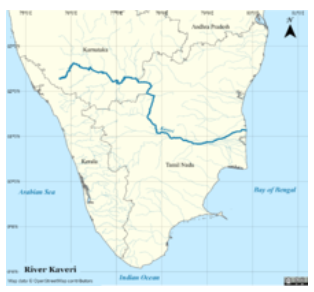
The Cauvery River: A Geographical Overview
- The Cauvery River, often referred to as the 'Dakshi Bharat ki Ganga' or 'the Ganga of the South,' originates from Talakaveri on the Brahmagiri range near Cherangala village in Kodagu (Coorg) district of Karnataka, at an elevation of 1,341 m. Stretching over a length of 800 km, the river flows in a southeasterly direction for 705 km through the states of Karnataka and Tamil Nadu, descending the Eastern Ghats with impressive falls.
- Before reaching the Bay of Bengal south of Cuddalore, Tamil Nadu, the river forms an extensive delta, aptly named the "garden of southern India," with numerous distributaries.
- The Cauvery basin encompasses the states of Tamil Nadu, Karnataka, Kerala, and the Union Territory of Puducherry, covering an area of 81 thousand sq. km.
- Bounded by the Western Ghats on the west, Eastern Ghats on the east and south, and ridges separating it from the Krishna and Pennar basins to the north.
- The basin is physiographically divided into three regions: the Western Ghats, the Plateau of Mysore, and the Delta.
- The fertile delta area is a crucial tract in the basin, hosting a variety of soil types, including black soils, red soils, laterites, alluvial soils, forest soils, and mixed soils.
- Rainfall patterns vary across the basin, with Karnataka receiving primarily from the southwest monsoon and partially from the northeast monsoon.
- Tamil Nadu, on the other hand, benefits significantly from the northeast monsoon.
- The upper catchment experiences southwest monsoon rains during the summer, while the lower catchment receives rainfall from the retreating northeast monsoon in winter.
- This consistent rainfall makes the Cauvery almost a perennial river, with minimal fluctuations in flow, making it valuable for irrigation and hydroelectric power generation.
- The basin boasts scenic attractions, such as the Sivasamudram Falls near Sivasamudram, reaching a width of 300 m in the rainy season.
- These falls contribute hydroelectric power to regions like Mysore, Bengaluru, and the Kolar Gold Fields.
- The Cauvery stands out as one of the best-regulated rivers, with 90 to 95 percent of its irrigation and power production potential already harnessed.
- Finally, the river gracefully drains into the Bay of Bengal, with the majority of the basin dedicated to agricultural land, constituting 66.21% of the total area.
Source: TH
PM Vishwakarma Scheme: Artisan Empowerment
In News: The PM Vishwakarma Scheme, launched by the Centre, has garnered over 21 lakh applications in two and a half months.
PM Vishwakarma Scheme: Nurturing Artisan Heritage
- Overview
- The PM Vishwakarma Scheme is a dedicated initiative aimed at uplifting traditional artisans and craftsmen engaged in diverse occupations such as blacksmithing, goldsmithing, pottery, carpentry, and sculpting.
- The scheme emphasizes preserving cultural heritage and integrating these skilled artisans into the formal economy and global value chains.
- Administrative Framework
- Implemented as a Central Sector Scheme, the initiative is fully funded by the Government of India.
- The Ministry of Micro, Small and Medium Enterprises (MoMSME) serves as the nodal ministry, with joint implementation by MoMSME, the Ministry of Skill Development and Entrepreneurship, and the Department of Financial Services under the Ministry of Finance.
Key Features
- Recognition and Support: Artisans enrolled in the scheme receive a PM Vishwakarma certificate and an identity card. Additionally, they are eligible for collateral-free credit support of up to Rs 1 lakh (first tranche) and Rs 2 lakh (second tranche) at a concessional interest rate of 5%.
- Skill Development and Empowerment: A budget of Rs 13,000 crore for five financial years (2023-2024 to 2027-2028) has been allocated. The scheme offers a stipend of Rs 500 for daily skill training and a Rs 15,000 grant for the purchase of modern tools.
- Scope and Coverage: Encompassing 18 traditional trades in both rural and urban areas, the scheme includes carpenters, boat-makers, blacksmiths, potters, sculptors, cobblers, tailors, and more.
- Registration and Implementation: Artisans can register for the Vishwakarma Yojana at common services centers in villages. While the central government provides funding, state governments' support is also solicited.
Objectives
- Ensure seamless integration of artisans into domestic and global value chains, enhancing market access and opportunities.
- Preserve and promote India's rich cultural heritage rooted in traditional crafts.
- Assist artisans in transitioning to the formal economy and integrating them into global value chains.
Significance
Recognizing the indispensable role of Vishwakarmas in society, the scheme aims to provide crucial support to these artisans, acknowledging their contribution regardless of technological advancements. The initiative underscores the need to integrate traditional artisans into the global supply chain, ensuring the preservation of India's cultural legacy.
Source: TH
Persona non grata - Edukemy Current Affairs
In News: Sudan's Foreign Ministry recently declared 15 UAE Diplomats persona non grata, demanding their departure from Sudan.
Persona Non Grata: Unwanted in Diplomacy
- Definition
- Persona non grata is a Latin phrase signifying an "unwelcome person."
- In the realm of diplomacy, it refers to a diplomat or foreign individual whose entry or presence in a particular country has been forbidden by that country.
- Diplomatic Context
- The diplomatic significance of persona non grata was established by the 1961 Vienna Convention for Diplomatic Relations.
- According to Article 9 of the treaty, a country retains the right to declare any member of a diplomatic staff persona non grata at any time, without the obligation to provide an explanation for its decision.
- Procedure
- Following the declaration, the individual typically returns to their home nation promptly.
- Failure to do so within a reasonable period may result in the host country refusing to recognize the person as a member of the diplomatic mission.
- Importantly, a person can be labeled *persona non grata* even before their arrival in a country.
- Usage and Historical Context
- There are no fixed rules dictating when a country can declare a foreign individual persona non grata since no explanation is required under Article 9 of the Vienna Convention.
- Throughout history, nations have employed this designation to express dissatisfaction with the actions of other countries.
- Notably, during the Cold War, it evolved into a reciprocal measure, with the United States and the Soviet Union frequently declaring each other's diplomats persona non grata.
- Beyond Diplomats
- It's crucial to note that the imposition of the persona non grata designation extends beyond diplomats and can be applied to any foreign individual whose presence a country deems undesirable.
Source: TH
Putting an End to Rhetoric on Air Pollution
In News: For a genuine commitment to combatting air pollution, the government should ensure that the matter is deliberated during the winter session of Parliament.
Decoding Air Pollution: Threats and Triggers for Health and Environment
Definition
Air pollution refers to the contamination of the atmosphere by substances that pose harm to human health, living organisms, and the climate. These pollutants can also cause damage to materials. Common air pollutants include:
- Particulate Matter (PM10 and PM2.5)
- Tiny solid or liquid particles suspended in the air.
- Originates from natural sources like dust and human activities such as burning fossil fuels and industrial processes.
- PM2.5 poses higher health risks by penetrating deeper into the lungs and bloodstream.
- Ozone (O3)
- A gas formed when sunlight reacts with nitrogen oxides and volatile organic compounds (VOCs).
- Beneficial in the stratosphere for UV protection but harmful in the troposphere, causing respiratory issues.
- Nitrogen Dioxide (NO2)
- A gas resulting from the reaction of nitrogen oxides with oxygen.
- Emitted by combustion processes, including motor vehicles and industrial activities.
- Causes respiratory problems and contributes to ozone and particulate matter formation.
- Carbon Monoxide (CO)
- Colorless, odorless gas produced by incomplete combustion of carbon-containing fuels.
- Reduces oxygen supply to organs, leading to headaches, dizziness, and, at high levels, death.
- Sulfur Dioxide (SO2)
- Gas formed during the burning of sulfur-containing fuels.
- Causes irritation, breathing difficulties, and contributes to acid rain formation.
- Water Vapor
- Abundant greenhouse gas in the atmosphere.
- Not a direct pollutant but contributes to the greenhouse effect, amplifying the warming effect when interacting with other greenhouse gases.
Primary Causes of Air Pollution in India
- Vehicular Emissions
- In urban areas, vehicles contribute significantly to air pollution, constituting 40% of PM2.5 emissions in Delhi, according to the Centre for Science and Environment (CSE).
- Industrial Chimney Wastes
- Industries, especially in northern and eastern regions, are major contributors. In 2019, 139 out of 287 coal-based thermal power plants violated emission norms, emitting pollutants like sulfur dioxide, nitrogen oxides, and VOCs.
- Burning Fossil Fuels
- Power plants, factories, and households using coal, oil, or natural gas contribute to India being the third-largest CO2 emitter globally, as reported by the World Bank Group.
- Agricultural Activities
- Farming practices, including crop residue burning, fertilizer use, and livestock farming, contribute to air pollution. Crop burning alone accounted for 44% of Delhi’s PM2.5 concentration in November 2019.
- Indoor Air Pollution
- Biomass fuel usage for cooking in rural areas affects over 800 million people, emitting pollutants at concentrations five times higher than coal. This leads to health issues like lung infections and COPD.
- Burning of Garbage Waste
- Open burning of household waste releases toxic chemicals and dioxins into the air, contributing to diseases. Waste burning accounted for 29% of Delhi’s PM10 concentration in winter 2018.
- Slaughter Industry
- Methane emissions from ruminant animals, improper disposal of animal waste, and burning of carcasses contribute to greenhouse gas emissions. India’s slaughter industry generates vast amounts of solid waste and wastewater, often lacking proper waste management.
Challenges in Addressing Air Pollution
- Enforcement and Compliance
- Weak enforcement of existing regulations hampers efforts to prevent or penalize polluting activities.
- Financing and Incentives
- Inadequate financial support and incentives hinder the adoption of clean technologies and emission reduction practices.
- Public Awareness
- Low public awareness about the causes, effects, and solutions of air pollution poses a challenge.
- Capacity and Expertise
- Insufficient capacity and expertise among institutions and stakeholders limit the design and implementation of effective air pollution policies.
- Climate Adaptation
- Lack of resilience to changing climatic conditions and extreme weather events exacerbates air pollution challenges.
- Research and Innovation
- Insufficient research and innovation impede the development of evidence-based solutions for air pollution mitigation.
Strategies to Address Air Pollution
- Vertical Forests
- Skyscrapers covered with vegetation act as natural air purifiers, absorbing carbon dioxide and contributing to the city's aesthetics.
- Air Purifiers and Smog Towers
- Installing devices like air purifiers and smog towers can filter airborne particulates, enhancing air quality.
- Low-Carbon Technologies
- Promoting technologies such as solar panels, wind turbines, and electric vehicles reduces dependence on fossil fuels.
- Urban Green Spaces
- Developing parks, gardens, and rooftops enhances air quality, reduces heat island effect, and provides recreational benefits.
- Congestion Pricing and Low Emission Zones
- Implementing policies like congestion pricing and low emission zones encourages cleaner transportation alternatives.
- Biomass Briquettes/Pellets
- Utilizing biomass pellets as an efficient and affordable fuel source for rural households.
- Biomimicry
- Designing buildings and materials inspired by natural processes for air purification.
- Supporting Innovative Solutions
- Backing social enterprises and startups offering innovative air pollution solutions.
|
UPSC Previous Year Questions Prelims (2022) Q. Consider the following:
Excess of which of the above in the environment is/are the cause(s) of acid rain? (a) 1,2 and 3 Answer - (b) Mains () Q. Mumbai, Delhi and Kolkata are the three mega cities of the country but the air pollution is much more serious problem in Delhi as compared to the other two. Why is this so? |
Source: TH
Share the article
Edukemy’s Current Affairs Quiz is published with multiple choice questions for UPSC exams
MCQ
Get Latest Updates on Offers, Event dates, and free Mentorship sessions.

Get in touch with our Expert Academic Counsellors 👋
FAQs
UPSC Daily Current Affairs focuses on learning current events on a daily basis. An aspirant needs to study regular and updated information about current events, news, and relevant topics that are important for UPSC aspirants. It covers national and international affairs, government policies, socio-economic issues, science and technology advancements, and more.
UPSC Daily Current Affairs provides aspirants with a concise and comprehensive overview of the latest happenings and developments across various fields. It helps aspirants stay updated with current affairs and provides them with valuable insights and analysis, which are essential for answering questions in the UPSC examinations. It enhances their knowledge, analytical skills, and ability to connect current affairs with the UPSC syllabus.
UPSC Daily Current Affairs covers a wide range of topics, including politics, economics, science and technology, environment, social issues, governance, international relations, and more. It offers news summaries, in-depth analyses, editorials, opinion pieces, and relevant study materials. It also provides practice questions and quizzes to help aspirants test their understanding of current affairs.
Edukemy's UPSC Daily Current Affairs can be accessed through:
- UPSC Daily Current Affairs can be accessed through Current Affairs tab at the top of the Main Page of Edukemy.
- Edukemy Mobile app: The Daily Current Affairs can also be access through Edukemy Mobile App.
- Social media: Follow Edukemy’s official social media accounts or pages that provide UPSC Daily Current Affairs updates, including Facebook, Twitter, or Telegram channels.


